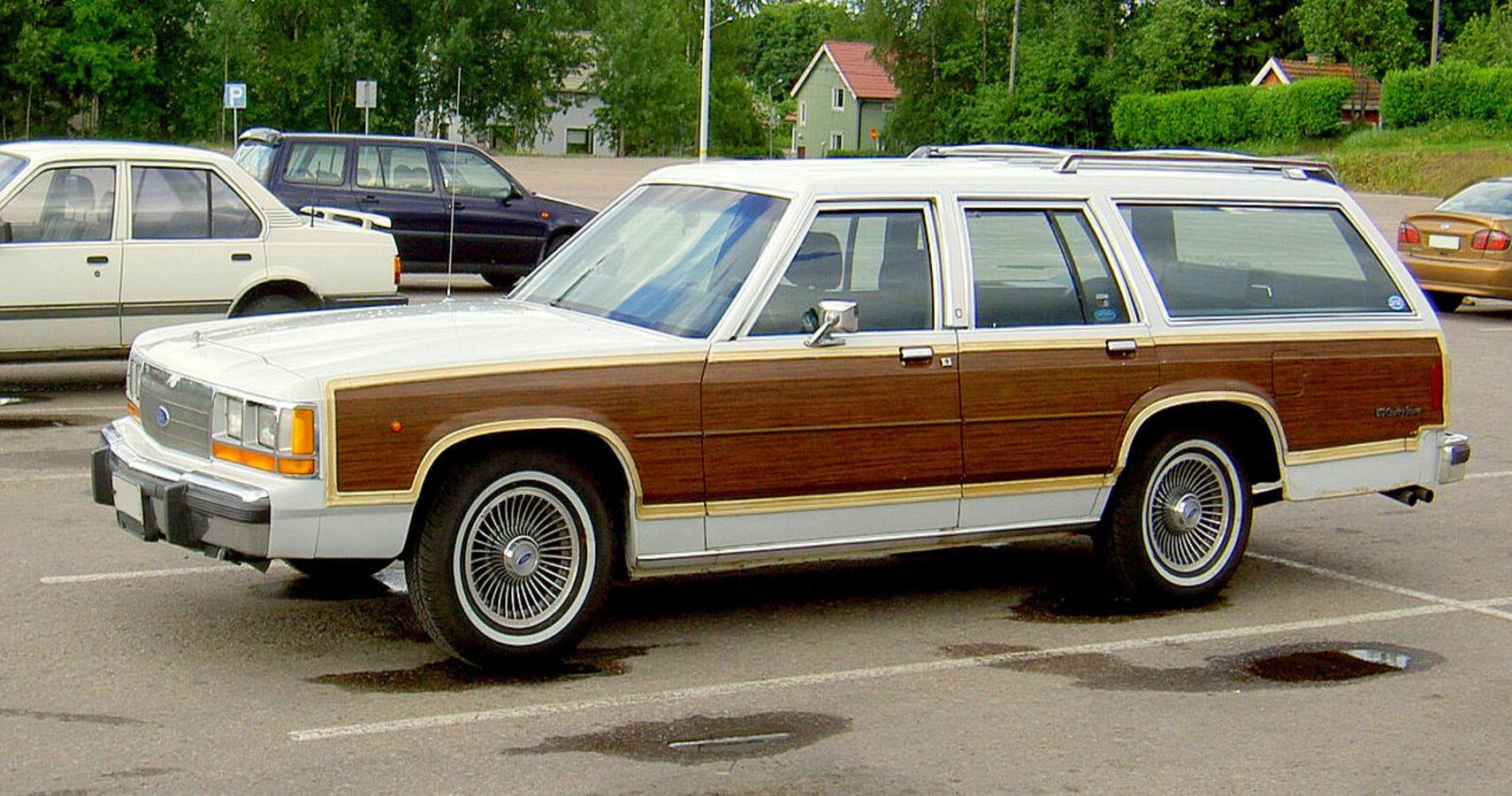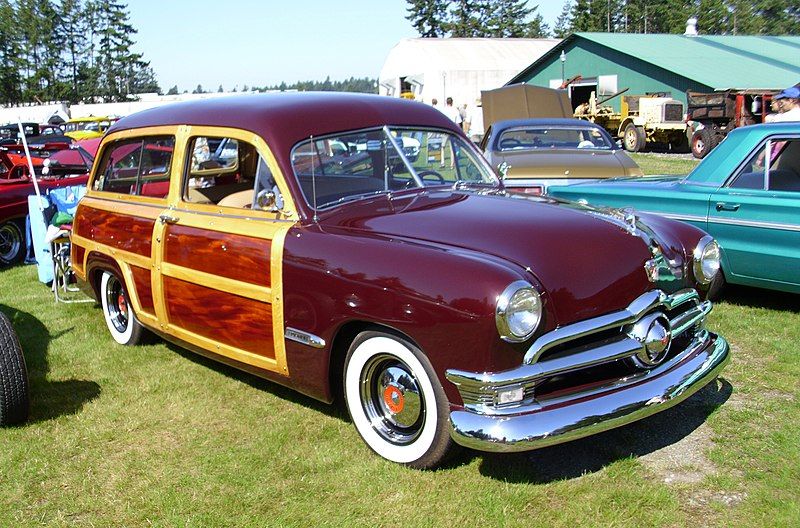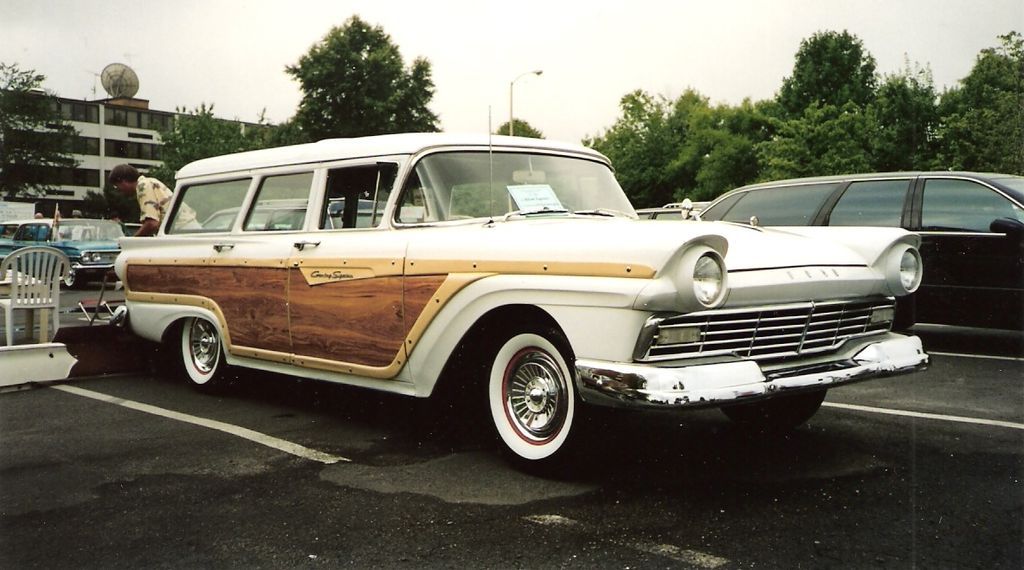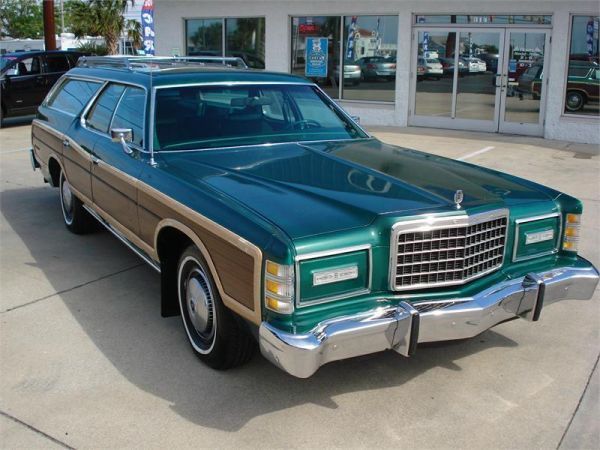The thought of driving a classic car is always fascinating. Driving from point A to point B in a vintage model - turning everyone's heads along the way - is an unrivaled feeling for any automobile lover. Classic cars have always been a hot topic in the automobile sphere. Some are renowned for their rarity, while some hold the distinction of being more expensive than some of the finest modern-day cars.
Speaking of classic cars, Ford is a brand that has a rich history. The American automaker is renowned for producing some iconic cars in the yesteryears. One such iconic vehicle is the Ford Country Squire. Launched in 1950, this classic Ford was a massive success upon its launch. Its reign lasted over 4 decades, overseeing 8 generations.
Let's have a closer look at the iconic Ford Country Squire and find out how much is it worth today.
Production History
The Ford Country Squire was an infamous line of Station Wagons assembled by the American automaker, Ford. The premium full-sized station wagon of Ford division was in production between 1950 and 1991, during which the company saw eight generations of the car trot the globe.
In the 1949 model year, Ford introduced its post-war model line. The designs were worked on and several additions and subtraction later, Ford managed to make a car that could be a catalyst to transition the station wagon from a commercial vehicle to a primary family car. The Ross cousins and Eugene Gregorie designed this vehicle in great detail. The regular complete wooden body aft from the "Firewall" was ditched for a fusion of a steel roof, rear fenders, and a tailgate frame. The side bodywork and the upper/lower tailgates, however, retained the wood.
First-generation of the Country Squire was largely offered in two engine variants: the flathead I6 (226 cu in 3.7L) and the flathead V8 (239 cu in 3.9L). 3 speed and 4-speed manual transmission options were made available, apart from the 3-speed Ford-O-Matic transmission (automatic). In 1949, the car sold over 31,000 custom cars, and then the years 1950 and 1951, saw over combined 51,000 units of the Squire wagons sold.
Between 1952 and 1954, the second-generation Ford Country Squire was out to conquer. The new 4-door station wagon offered 3 engine variants: the Mileage Maker I6, the Flathead V8, and the Y-block V8. Transmission variants remained the same, but the wheelbase was slightly increased. The length was decreased by 10 inches to make the car appear more like a sedan, rather than a commercial wagon. The design credits for the second-gen Country squire belong to Gordon Buehrig.
Third-generation models of the Ford Country Squire were out in 1955 and 1956. A functional update of the second-gen model, the car was inclusive of several styling revisions. The Crestline was discontinued and the wheelbase was retained at 115.5 inches. The classic car offered new Thunderbird V8 engine variants. Over 42000 units of the third-gen were sold.
The fourth-generation Country Squire aced the streets between 1957 and 1959. Three new engine variants were out and the new 3-speed Cruise-O-Matic automatic transmission was introduced. The car was now a 9 seater instead of 8. It was built wider and the wheelbase varied between 116 and 118 inches. Between 1960 to 1964, the fifth-generation line was redesigned impressively. The upgraded Squire displayed charismatic finesse and style. The wheelbase was now standard at 119 inches as the car was enlarged by 5 inches in width and five inches in length. The sixth and seventh generation of the models only saw the car increase in length and width.
The eighth and final generation of the Squire saw Ford downsize the car by 11 inches in length while the weight was trimmed by nearly 1000 pounds. The V8 engine was retained, but the Squire shifted from 400 and 460 V8 to the 302 and 351 CU Windsor V8, the same engines as Ford Granada. In the mid-80s, sales of full-size station wagons began to decline and by 1991, the Country Squire was the slowest-selling Ford vehicle in North America before it was discontinued altogether.
A Car That Stood Out
In a by-gone era, the Ford Country Squire was advanced and unique. The car provided infotainment and comfort options considered scarce back then. When newspapers were considered the real deal, certain versions of the Country Squire were equipped and compatible with infotainment options such as AM/FM-Cassette Stereo with (combined Citizens’ Band) two-way radio and replacement dual-purpose antenna. Other optional features included opposite facing, foldable rear seats to ensure more cargo space, and a folding table with an integrated magnetic checkers board - a perfect choice for an era where play-stations weren’t introduced.
Behind the rear fender well was a lockable compartment - which was hidden when the seats were upright - perfectly ideal for hiding valuables on long trips in unchartered territory. The Ford Country Squire was way ahead of its time. A comfortable and spacious car, with the best in class amenities, infotainment options.
How Much Is It Worth Today?
The vintage Country Squire is unlikely to be sold in big numbers in today's automobile market but often finds its way into important auctions where car lovers like to buy a blast from the past. In fact, very recently, the world was in awe as the collector-car market saw a 1978 Ford Country Squire auctioned off for a mammoth $45,000. The limited wagon has traveled just 5000 miles and is exceedingly well preserved. You can go ahead and snap up one of these classics in the range of around $30,000 (depending on the condition of the vehicle and other factors).




